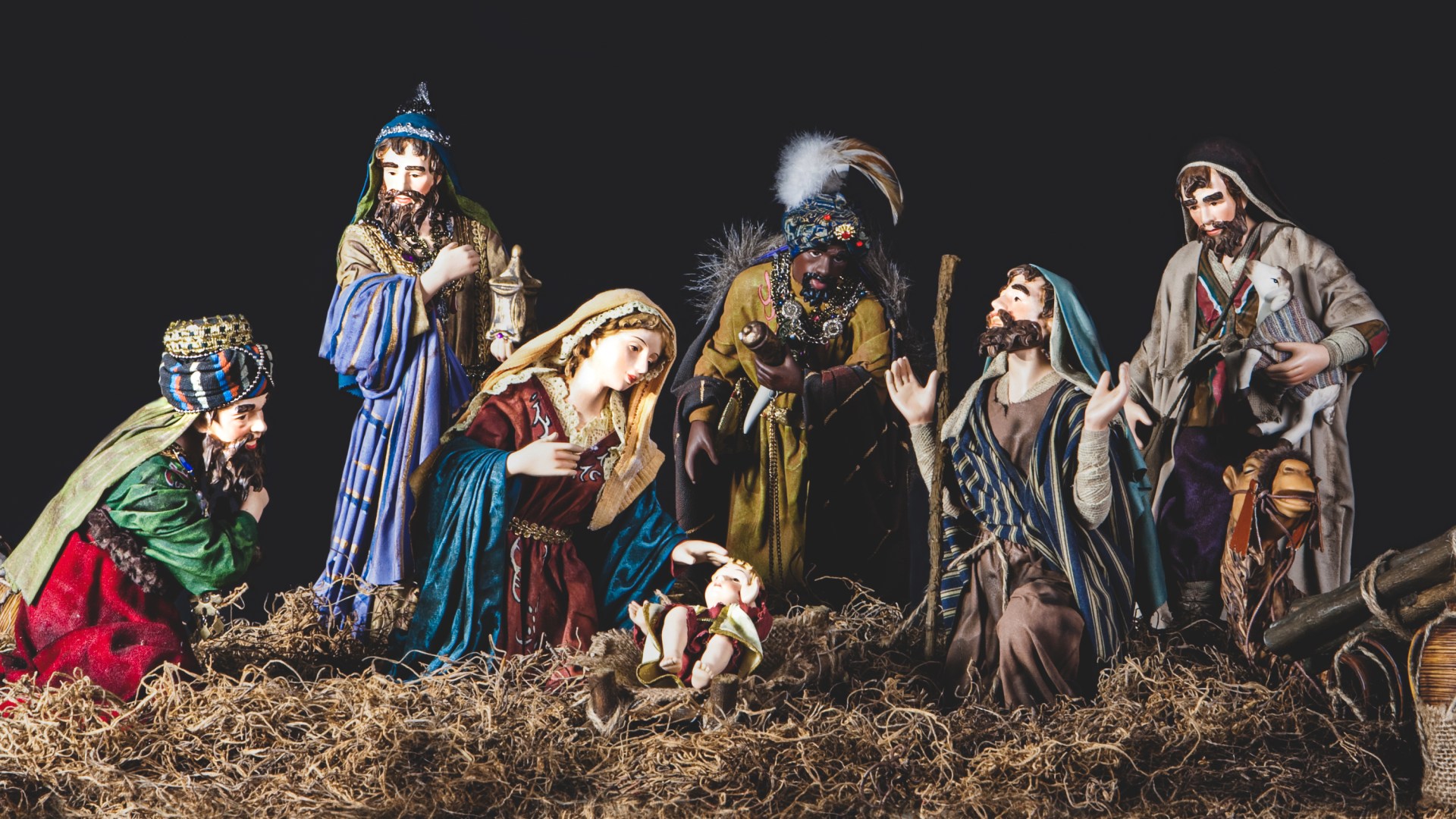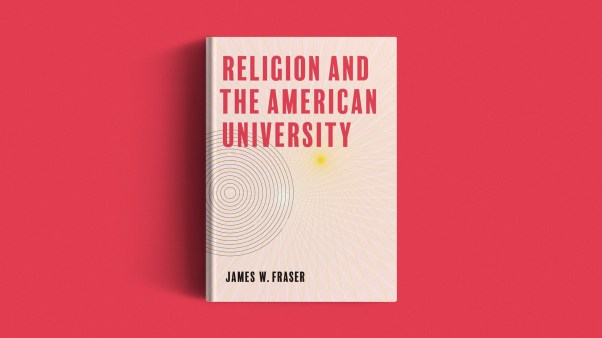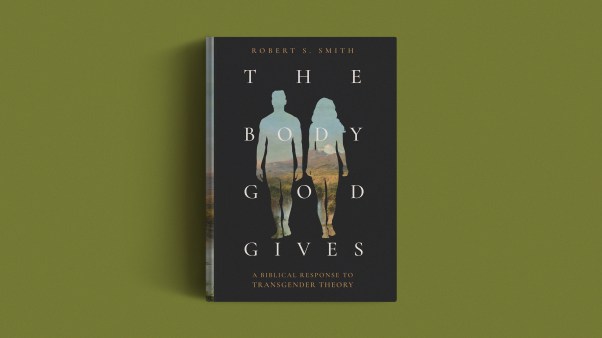Every night since she was two, my three-year-old daughter has proclaimed, “I want to be a shepherd girl.” The towel goes over her head, and she gathers her sheep. She then sets them out to pasture—“Here, little sheep, eat”—or seeks for them because they are lost. After the game is over and we finish her bedtime routine, my husband or I tuck her into bed with “lambie,” her most precious possession.
As a parent, I see this imagery of sheep and shepherd as the first way that Christ is revealing himself to my daughter. But as a scholar of medieval theology and literature, I see it more broadly as an example of how images help convey an ancient gospel in the present moment. In other words, our understanding of Scripture often hinges on verbal and visual pictures, not merely exegetical prose. This is especially true in the Advent season, with its rich and diverse imagery—plywood nativity scenes in front yards, bulletin covers showing shepherds and angels, Christmas pageants with crying babies and crawling sheep.
When we disciple our kids in this season and every other, we teach them general principles for everyday life: “Jesus loves you,” “God made you,” “God is good.” As we should. But we often forget that images and the imagination are central to religious education. This idea holds true not just for teaching Scripture to small people but to big ones, too. The beauty of verbal and visual images is that they can stick with us even when we don’t have the ability to appreciate their significance, because they are “goods” in themselves that point us to higher truths.
Think of it this way: There is a difference between cracking a nut to eat it and planting that same kernel to let it grow. When we think about images as nuts that need cracking, we can discard the shell because we’ve gotten to the meat. We don’t need the story anymore because we have the moral: God is love. If a story is a seed, however, its significance develops over time and cannot be fully grasped at first go.
Under this paradigm, a Bible story—whether historical or parabolic—needs first to be enjoyed and understood as a story, because the meaning cannot be reduced to a simplistic moral. Rather, as the story or image is understood over time, its meaning unfolds.
By way of illustration, my daughter can delight in the images and stories of the Bible without always appreciating their full significance for her life, but when the time is right, as long as the seed has been properly buried and “watered,” its meaning will unfold as she grows older. For now, she plays the “shepherd girl” game and listens to Bible stories about shepherds and lost sheep. Over time, these theologically rich images are kernels that have the power to grow and be nourished.
The image of the shepherd and sheep is what Augustine would have called a “metaphorical sign.” A rhetorician can be very technical about different kinds of metaphorical signs; allegory, metaphor, typology, and symbolism are different kinds of metaphorical signs. When Augustine speaks about metaphorical signs, however, he’s talking about something more basic that affects the way an interpreter needs to approach reading. “As far as metaphorical signs … are concerned,” writes Augustine, “wherever readers find themselves stuck because of their unfamiliarity, they need to investigate them partly by a knowledge of languages, partly by a knowledge of things.”
If we apply this principle to shepherding and sheep metaphors in Scripture, then interpreting these passages requires learning about actual shepherds, actual sheep, and the historical circumstances surrounding shepherding. Even the best reader of Hebrew and Greek cannot understand passages concerning sheep and shepherds without knowing something about actual sheep and shepherds.
For example, all of us, scholars and laypeople alike, need to know that shepherding was not a respected job in the ancient world and was often relegated to a younger sibling. We need to know that it was common, dull work. David tended sheep. Moses. Jacob and his sons. Isaac. Rachel. Abraham. Abel. As readers who know the end of the story, it is easy to think they were occupied in a respected profession in the ancient world, but that is because Scripture has cultivated our cultural imagination. Now we need to see how this biblical insight was and is countercultural.
We also need to know that Scripture’s attention to shepherds often concerns those who haven’t done their duty. The prophets throughout the Old Testament decry the prevalence of unfaithful shepherding resulting in the scattering of the sheep (2 Chron. 18:16; 1 Kings 22:17; Ezek. 34:5; Jer. 10:21; Ezek. 34:5–6 and 21; Jer. 23:1–2; Zech. 13:7; Isaiah 13:14). With this scriptural background in mind, it should not be surprising that Christ is often portrayed as the Good Shepherd that sees the scattered sheep and has compassion (Matt. 9:36, Mark 14:27, Matt. 26:31, John 10:12).
In sum: When we understand biblical images as things in history and in the world, then we begin to understand the words of Scripture, suggests Augustine.
When I first realized in graduate school the significance of Augustine’s words, I began to marvel, and then I began to despair. I marveled because it occurred to me that God had chosen images that were relatable to most people throughout history: water, gardens, wheat and weeds, grapes, candles, oil, marriage, animal husbandry, and the building of edifices. I then despaired because I realized that most of us living in modern Western society can’t relate to the many agricultural metaphors in Scripture, and almost all of the marriage metaphors are difficult to comprehend as well. Reading Wendell Berry (for the first) and attending all the marriage seminars in the world (for the second) aren’t enough to fix the problem.
And then I saw my daughter playing “shepherd girl.” Of course, her play-acting is not the same as that of a little boy or girl who has actually done real-world shepherding. Nonetheless, God has given her an imagination that enables her to understand this thing to some degree so that one day, when she is old enough, she can unpack its meaning for her life. I also marveled at this realization: God has given humans the capacity to imagine and play at things we’ve never experienced, and the power of his Word comes through in those imaginings.
“Who are you?” I asked my daughter as she put a towel over her head one night. “I’m Mary,” she replied as she collected her sheep again. I suppose she saw that Mary’s head was covered just like the shepherd’s head and then presumed that Mary was a shepherd girl. I didn’t correct her. Her imagination, like my own, needs to be formed over time.
While at the moment she sees primarily the nurturing side of being a shepherd girl who mothers her lambs with food and puts them to bed, I hope one day she will also see the humility it takes to say yes to God, even when it means the world despises her. For both the shepherds and Mary were despised by the world. The shepherds because their profession was lowly, and Mary because the world presumed she had sinned when she had not. They were not appointed religious or political leaders, but God used them, because when he spoke, they listened. I pray my daughter will listen, too.
This Advent and Christmas season, we are invited to see images of the Nativity not as quaint supplements to doctrinal truth but rather as invitations to form and reform our imagination. We can join the little children in their playful engagement with the images of the Christmas story without rushing so quickly to exegesis. And we can slow down and enjoy the repetition, waiting to hear, like Mary, what God might speak to us.
Lesley-Anne Dyer Williams is an assistant professor of literature and Latin and director of the Liberal Arts Guild at LeTourneau University. She holds a master of philosophy degree in theology and religious studies from the University of Cambridge and a PhD in medieval studies from the University of Notre Dame.









